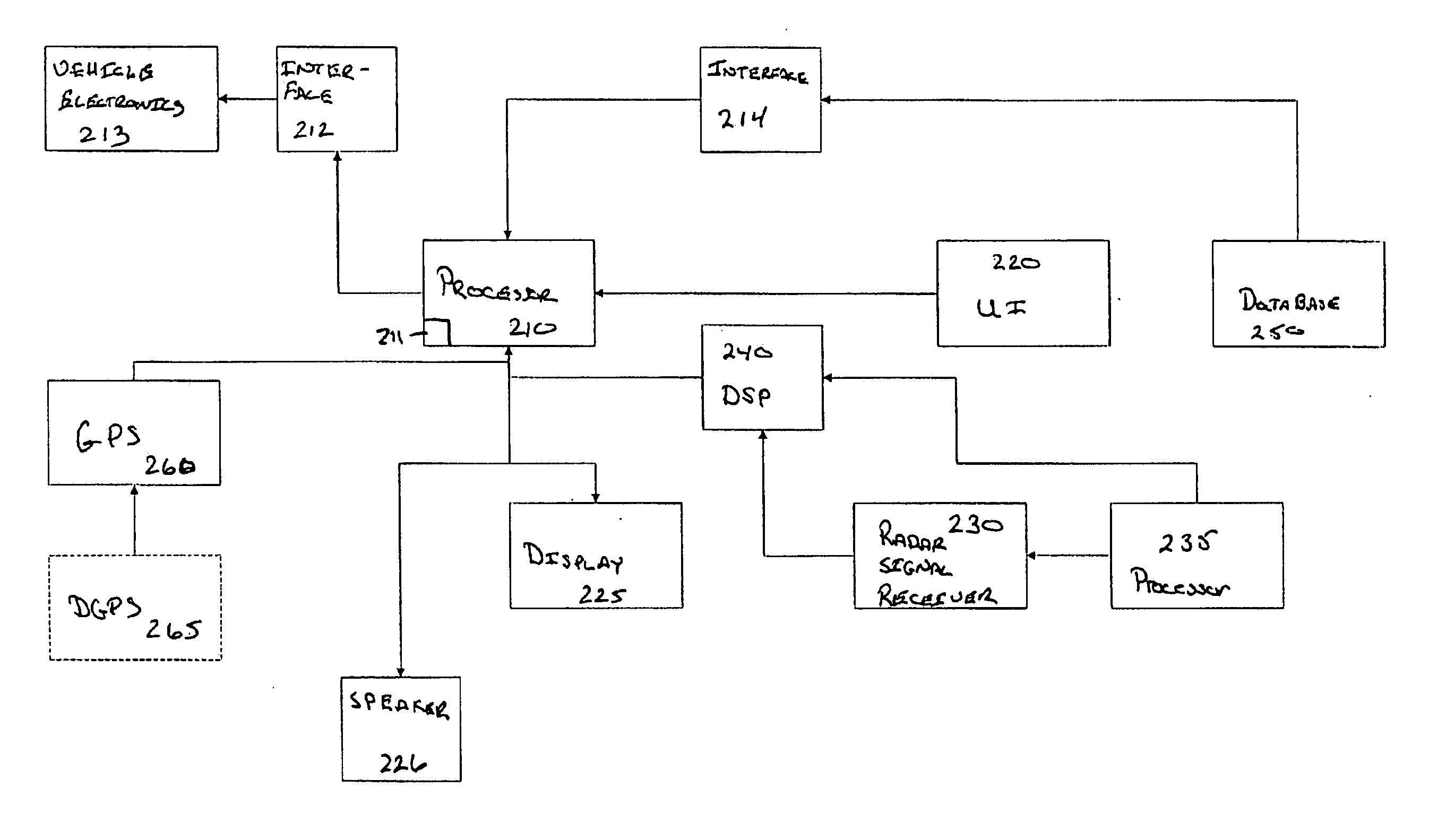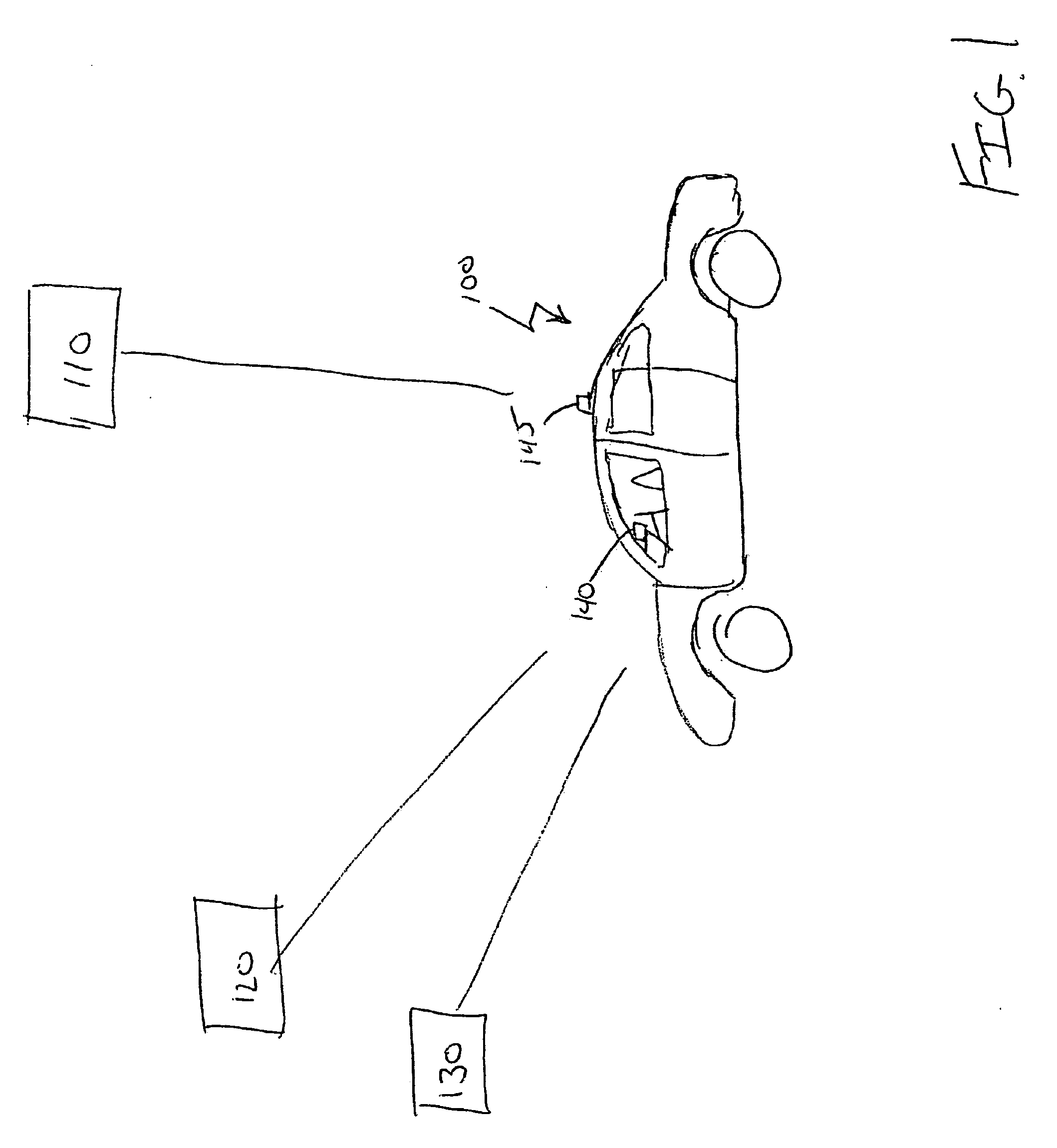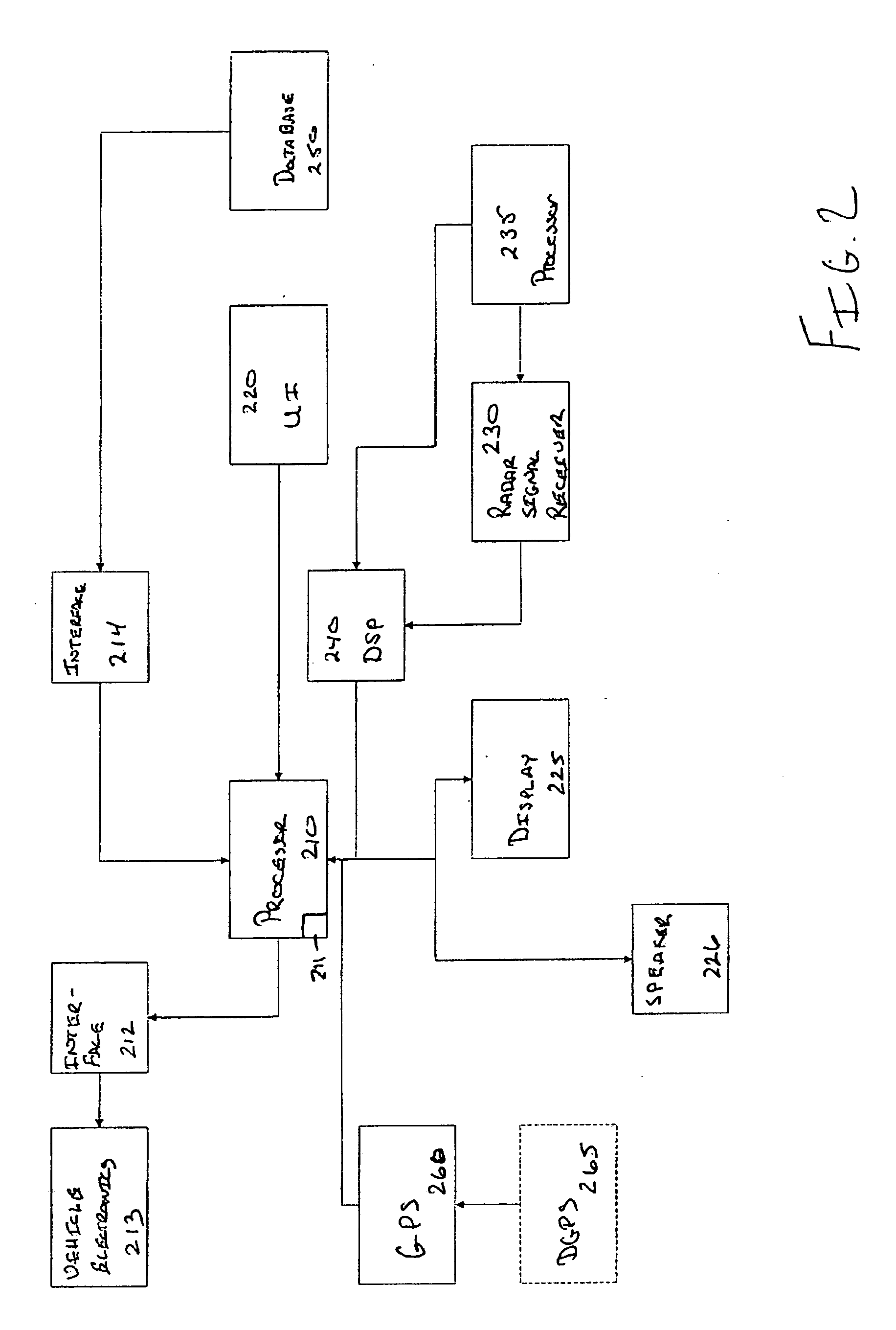Radar detector with signal source location determination and filtering
a technology of signal source and detector, applied in direction finders, instruments, communication jamming, etc., can solve problems such as undermining the credibility of radar detector performance, radar detectors cannot tell the difference between emissions from many of these devices and true police radar systems, and radar detectors are increasingly generating false alarms
- Summary
- Abstract
- Description
- Claims
- Application Information
AI Technical Summary
Problems solved by technology
Method used
Image
Examples
Embodiment Construction
[0031] Referring now to FIG. 1, a vehicle 100 is illustrated in operation on a roadway, under exposure to a radio frequency signals from a variety of sources. These include a GPS satellite system 110, police radar signals from a radar gun 120, and non-police sources of interference 130. These non-police interference signals can be generated by a variety of sources such as automatic doors or security systems. Vehicle 100 also includes a radar detector 140 which is able to identify the present location and / or the velocity of the vehicle 100, using a GPS receiver 145 connected to the unit. However, other land-based signals such as LORAN can be used instead. The radar detector 140 uses this information to determine if the received signal is proper police signal 120 or is merely interference from a non police signal 130.
[0032]FIG. 2 is a block diagram illustrating the components of the radar detector 140 according to one embodiment of the present invention. Radar detector 200 correspond...
PUM
 Login to View More
Login to View More Abstract
Description
Claims
Application Information
 Login to View More
Login to View More - R&D
- Intellectual Property
- Life Sciences
- Materials
- Tech Scout
- Unparalleled Data Quality
- Higher Quality Content
- 60% Fewer Hallucinations
Browse by: Latest US Patents, China's latest patents, Technical Efficacy Thesaurus, Application Domain, Technology Topic, Popular Technical Reports.
© 2025 PatSnap. All rights reserved.Legal|Privacy policy|Modern Slavery Act Transparency Statement|Sitemap|About US| Contact US: help@patsnap.com



